There’s a hidden war in the insect world, a war of good and weevil, in which the pantry is often a battlefield. These tiny critters can pop up seemingly out of nowhere destroying garden crops or even the boxed goods in your pantry before you even open them.
But how do they accomplish this terrible dark magic? Here’s how to get rid of weevils and everything you need to know to identify and prevent them.
How to Get Rid of Weevils
There are several ways to fight off these tiny magicians. Both indoor and outdoor weevils suffer from familiar weaknesses. Let’s look at a few common methods, tricks for specific rooms, and finally the garden.
Getting Rid of Weevils in the House (in General)
We’ll talk more about pantry infestations in a later section, but for now, let’s cover a few simple tricks. Each home remedy here will work (avoid pesticides if working near food!). Just remember, as with all treatments, your mileage may vary if you only use one.
Cleaning
The vacuum, steamer, and a rag with some hot water and vinegar are your best friends. This will get rid of food debris, kill any weevils present, and help repel or kill other pests.
In fact, the high heat of a good steam vacuum can make quick work of weevils. It can even kill any eggs that have been laid inside food debris.
- CLEAN. DISINFECT. SANITIZE. DEGREASE. DEODORIZE. ANY SURFACE. CHEMICAL-FREE.
- POWERFUL STEAM CLEANER: up to 275°F/135°C. Best multi purpose steamer for...
- HEAVY-DUTY & LARGE CAPACITY: Up to 50 minutes of cleaning time per fill up.
Repellents
Bay leaves and cloves tend to be natural repellents against weevils and many other pests. Consider placing them in areas where you’re likely to store or prepare food. Fresh garlic also seems to do a good job of keeping weevils away (and other creatures of the night).
It’s also possible that essential oils will repel weevils. Citrus and peppermint (two staples in pest control) seem to work the best and will make the treated area smell nice to boot.
Traps
Sticky traps and pheromone traps (like Dr. Killigan’s Pantry Moth Traps) are both quite effective (be sure the latter is designated for weevils). Make sure they’re out of reach of children and pets.
- Dr. Killigan’s Has Served More Than 1 Million Households — Don’t settle...
- End Pantry Moth Destruction — Dr. Killigan’s lab-proven, pheromone pantry...
- Backed By Patented Technology — Dr. Killigan’s Proprietary Blue Stripe...
How to Get Rid of Weevils in Bathrooms
You might not expect these critters to infest bathrooms, but the moisture is highly attractive. You’ll most commonly encounter the Asiatic oak weevil, black vine weevil, cowpea weevil, rice weevil, and strawberry root weevil in this room. However, other species may end up in the room, usually by accident.
One of the best ways to eliminate these critters is to use diatomaceous earth. DE is extremely effective against most bugs and is non-toxic (unless you try snorting it). Simply sprinkle the DE around your sink, toilet, and tub. The sharp edges of this natural pesticide will shred a bug’s exoskeleton, causing it to die of dehydration.
How to Get Rid of Weevils in the Pantry or Kitchen
There are all sorts of pantry weevils out there. Most of the time, they were already infesting packaged goods when you bought them. The presence of food makes it harder to fight them, but not impossible.
We’re very wary about recommending the use of pesticides around food (even those deemed safe on the label). However, sticky traps are a good route to go. Sprinkling diatomaceous earth on pantry shelves is also an excellent treatment plan.
How to get Rid of Weevils in Gardens
There are a lot of different remedies to fend off weevils, from chemical to hiring natural predators (parasitic wasps especially love weevils). However, the best overall remedy is to use a neem soil soak.
Emulsify either a quart or gallon of water by adding one teaspoon of Dawn dish detergent and gently blending. Now you can mix in some 100% cold-pressed pure neem oil (readily available online and at most garden centers). Aim for a ratio of one teaspoon per quart or two tablespoons per gallon.
When it’s time to water, pour two or three cups (more for especially large plants)onto the soil around the plant. The neem will kill any larvae in the soil, then become a systemic insecticide once absorbed into the plant. The neem will remain effective for up to 22 days, kill hundreds of piercing or chewing plant pests, and won’t harm earthworms or beneficial insects.
Best of all, you can apply it every three weeks aa preventative. You can even harvest crops 24 hours after treating the plant without any risk of toxicity. This treatment works for potted plants, as well as gardens and even trees.
How to Keep Weevils Out of Your Pantry
Due to the way most weevils lay their eggs, it can be nearly impossible to ensure no weevil can even get in. However, there are several way to reduce the risk.
Check Your Package
This one can be pretty difficult, since stores tend to frown upon you opening food products in the aisle. Instead, you’ll need to pay a little attention and use common sense to scan for potential contamination.
For example, never buy a cereal grain product that has an open package. If you see powdery debris leaking from the box, it may well be contaminated by weevils or some other bug.
When you get home, carefully open the box and examine any interior packaging or product for signs of infestation. Transfer the contents to airtight glass or metal containers (with or without a liner bag) and clearly label them. Yes, even pasta and pet food.
Not only can this help prevent infestations from a wide range of bugs, it can also help improve the shelf life of those foods.
Discard Breached Products
Weevils are able to burrow through cardboard or plastic containers to get to the food. Thus, if you suspect weevils have infested a package, you should destroy it (or return it to the store if unused) and carefully check any nearby containers for signs of damage.
Again, airtight glass or metal containers are your friend, as they’ll isolate an infestation so only the contents of that container will have to be destroyed. You’ll also want to get rid of the cardboard packaging, as weevils can often hide inside the boxes and emerge later.
Freeze Play
It might sound strange, but put your dry goods in the freezer when you come home from the store. By freezing them for four days, you’ll kill any eggs or larvae present.
While this might not exactly put your mind at ease when it’s time to cook said products, it will at least prevent an infestation in your pantry.
Wipe and Repeat
Once per month (or more), empty out your pantry and wipe down the shelving with hot, soapy water. Give it a second pass with white vinegar, which will not only kill weevils, it can also repel a range of other pantry pests.
Be sure to also wipe down each of your containers as you return them to the pantry.
Getting to Know Weevils
Unlike sugar ants and roaches, weevils are one pantry pest you can’t easily prevent. The good news is that you can greatly reduce the risk of an infestation and quickly deal with one when it happens.
What Do Weevils Look Like?
Weevils typically look like little black bugs and are members of the superfamily Curculionoidea with an estimated 97,000 known species. Of these, 83,000 species across 6,800 genera belong to the Curculionidae family and are known as the true weevils.
These beetles are round to oval and have a long, narrow snout that seems reminiscent of an anteater’s snout or elephant’s trunk. Even more bizarre, their antennae are located partway down this snout (known as a rostrum) instead of on the head itself.
True weevils all have the characteristic snout, although some species have shorter snouts than others. Meanwhile, there are several other beetles which lack the trademark snout and are given the nickname “weevil” because of similar feeding and breeding habits.
The size and coloration can vary greatly from one species to another (and sometimes even within the species itself). However, weevils are most commonly brown to black in base coloration and usually measure between 1/16 and 1/4 inch in length.
See Also: 9 Bugs That Look Like Black Sesame Seeds
What Do Weevils Eat?
Weevils feast on a few different things, depending on the species. Some adults will lay their eggs on the ground, and the resulting larvae burrow underground to feed on plant roots. Others will lay their eggs under tree bark where the weevils can munch on wood pulp. Several species will even go after your prized flowers.
But many of the ones we’re looking at today are far more destructive to the average consumer. For these species, the targets are fruit, nuts, and cereal grains.
Not only do the adults eat these items, they deposit their eggs inside of the target food and seal up the hole. The eggs hatch, and the larvae eat the infested item from the inside out.
While this behavior isn’t all that unusual for parasitic wasps and many other natural predators, they tend to do their egg-laying inside of pests. Weevils, on the other hand, do so inside of crops. Between the adults and larvae, weevil infestations are extremely difficult to eradicate and can lead to massive agricultural losses each year.
They’ve earned a few nicknames based on their feeding habits, such as flour bug, flour beetle, rice beetle, etc. Just a few of the crops commonly attacked by weevils include:
- Barley
- Buckwheat
- Maize
- Legumes
- Oats
- Rice
- Rye
- Wheat
Can They Fly?
While not all weevils can fly, most species can.
Can They Bite?
Weevils lack the necessary mouthparts to bite humans or otherwise cause any physical harm. In fact, their only real defense is to roll on their backs and pretend to be dead when threatened.
Do Weevils Carry Diseases?
Weevils are not known to carry any pathogens, although there is always the risk of cross-contamination, such as E-coli or salmonella. In theory, even if you cook food that has weevils in it, you won’t be at any actual risk of illness (until you notice their corpses in your food).
However, the presence of weevils in stored grains is still considered a health hazard due to the presence of feces, shed exoskeletons, eggs, and corpses. While these won’t actually harm you, some people with allergies may suffer from handling or consuming these contaminants.
Can Weevils Make You Sick if You Accidentally Eat Them?
As mentioned, you’re not likely to get sick from eating weevils unless you have some form of beetle-related allergy. Not that this is any real comfort if you find one in a spoonful of rice pudding.
What Causes a Weevil Infestation?
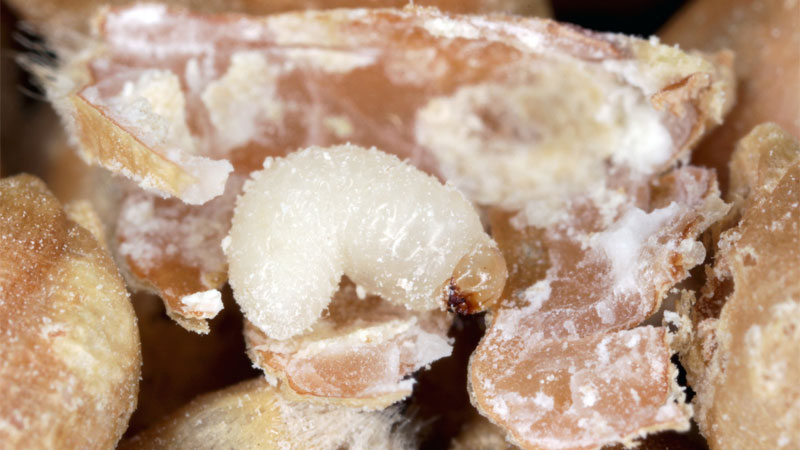
This is where a lot of confusion happens. You see, weevils can get into your home through entry points the same way as most other common household pests, but that’s actually not the most common way.
These pests are attracted by fruit and cereal grains, which can result in garden or grove infestation. Sometimes they begin infesting products that are being harvested on farms or orchards, leaving behind their tiny eggs on the harvested materials. From there, they may further infest grain silos or other food storage.
And this is where the magic happens. The eggs may be oviposited into fruits or nuts, or they might be present inside loose grains. These contaminated foods are packaged, shipped, and end up in your home complete with the weevils that were hiding inside.
But as horrifying as this sounds, there are many other critters that have been known do the same thing, including spiders, fruit flies, and other types of beetles. The good news is that this isn’t very common compared to even 100 years ago when food safety regulations were far more relaxed.
Where Do Weevils Hide?
Even adult weevils can hide in plain site, although they’re often easier to spot than the eggs. Eggs and larvae are actually inside the infested grains or fruit, making them almost impossible to find. This is one of the many reasons entire containers of food are discarded when a single weevil is discovered inside.
Please note that it’s possible to find weevils in your bedroom or living room if you frequently snack in those places, but they’d much rather be in the pantry. In addition, it’s not uncommon to find certain species hanging out in the bathroom.
It’s good to go for the kill when you spot them in these places, but they will otherwise wander back out on their own.
Common Weevil Species
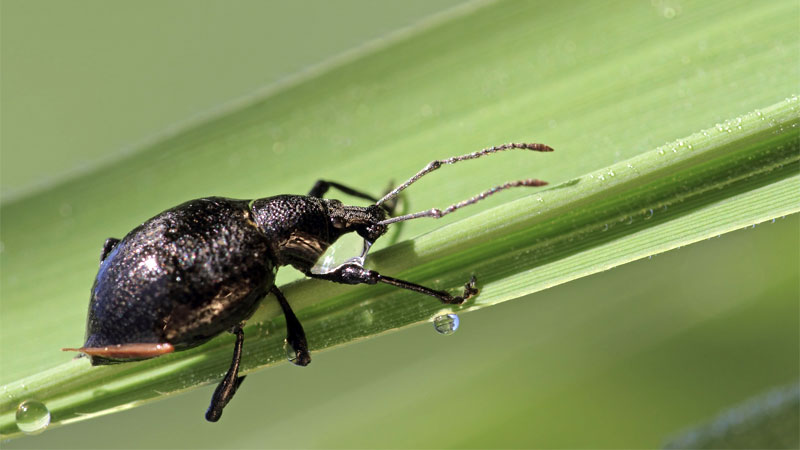
We could write an entire novel-length book giving just a few sentences on every species out there. However, there are a handful worth special note. These are some of the most common weevils you’re likely to run into and what sets each apart from the rest.
Bean Weevil (Acanthoscelides obtectus)
While not a true weevil, the bean weevil can be a major agricultural pest. They can be shades of brown with accents of yellowish or reddish brown. As the name implies, they feed on legumes.
Black Vine Weevil (Otiorhynchus sulcatus)
One of the most common weevils in the US, the black vine weevil is flightless, all black, and feeds on herbaceous plants. They’re especially dangerous to potted plants, but will attack anything from asters to rhododendrons.
Boll Weevil (Anthonomus grandis)
The boll weevil is a very common species with grey bodies that feeds on cotton plants. Of all the species out there, their common name is perhaps the best-known due to how much damage they did to crops throughout most of the 20th century.
Cowpea Weevil (Callosobruchus maculatus)
While technically a leaf beetle, the cowpea weevil is no less problematic than true weevils. They lack a snout and have reddish-brown bodies with grey and black markings, and feed on legumes of any variety (although they tend to prefer whatever particular legume variety they hatched upon if it’s readily available).
Maize Weevil (Sitophilus zeamais)
Sometimes referred to as the greater rice weevil, the maize weevil is particularly nasty, feeding on both cereal grains such as barley, buckwheat, cottonseed, oats, peas, rice, rye, sorghum, and wheat.
They also love to infest commercially prepared foods such as coarse-ground grains, cornmeal, or pasta. They’re even known to attack stored fruits when the mood strikes.
Rice Weevil (Sitophilus oryzae)
Oval, brown to black, and sporting four faint orange spots, this species is almost identical to the maize weevil and is even able to interbreed with them. Their diet consists of cereal grains such as maize, rice, and wheat.
Rose Weevil (Merhynchites bicolor)
Sometimes referred to as the rose curculio, the rose weevil destroys the petals and buds of roses, as well as shoots when the flowers aren’t present. There are five subspecies with different patterns of red and black.
Wheat Weevil (Sitophilus granarius)
The oval-shaped wheat weevil (AKA grain or granary weevil) is a uniform reddish-brown and feeds primarily on cereal grains. They’ll attack maize, wheat, and many other grains, with their adult size varying based on the size of the grain they hatched inside of.
White Pine Weevil (Pissodes strobi)
The white pine weevil is dark brown with white spots and can be found happily destroying white pines, although it also infests other pines and spruces. Interestingly, the target plants in some regions have developed a resistance and actually produce modified sap that can fend off an attempted infestation.
Will Weevils Go Away On Their Own?
We get this question for just about every pest we’ve covered, but for once the answer is… YES!
Weevil infestations are usually caused by contaminated food, in which case they will sometimes die out or leave when no food is available. Even an ongoing infestation can wane occasionally.
However, there’s a bit of a dark cloud to this silver lining. While the weevils in your pantry might go away on their own, the same isn’t necessarily true of those infesting your garden or potted plants. For these weevils, you will need to take action to protect your plants, as these pests may never leave if you don’t force them out.
- How to Get Rid of Hawks - March 8, 2024
- How to Get Rid of Pill Bugs (Rolly Pollies) - March 1, 2024
- How to Get Rid of Groundhogs (Woodchucks) - February 5, 2024

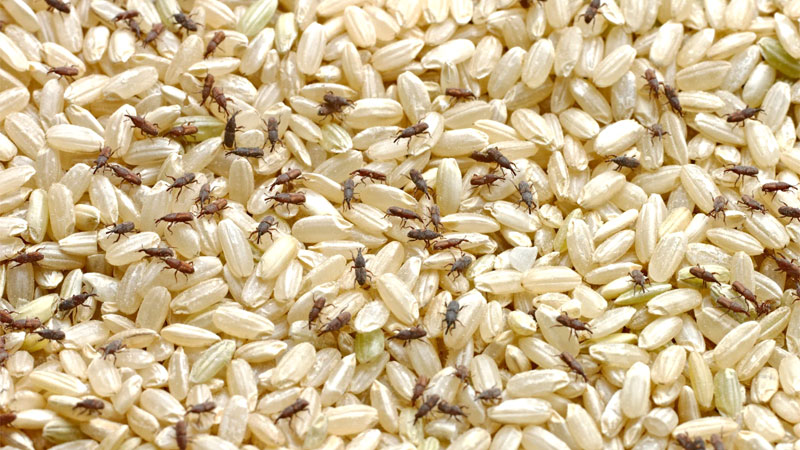
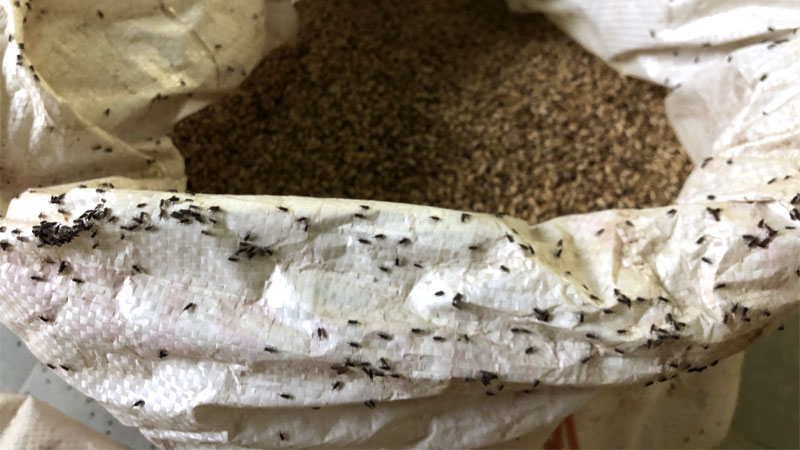


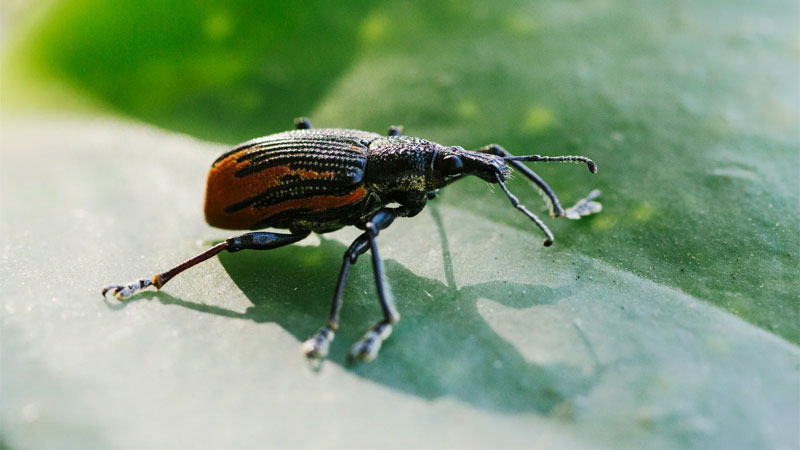

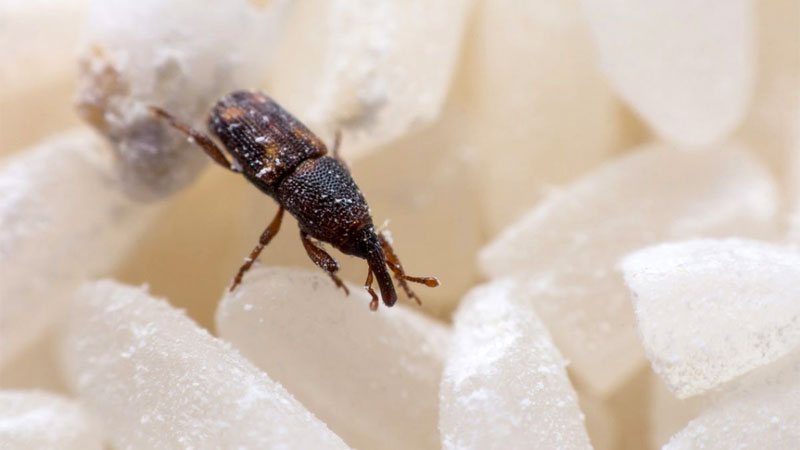
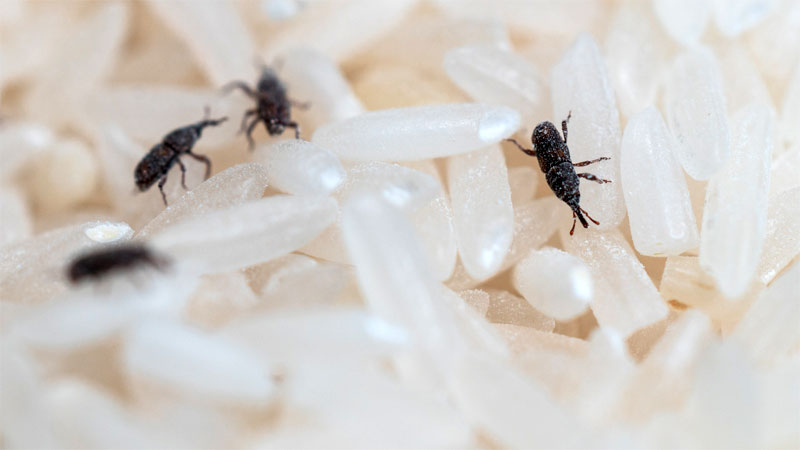
Thank you Morgan! This article is very informative and thorough. I now have the tools I need an understanding to tackle my pantry and prevent further weevil infestation.
Kind regards,
Laura Stockman
Hope it helps out!